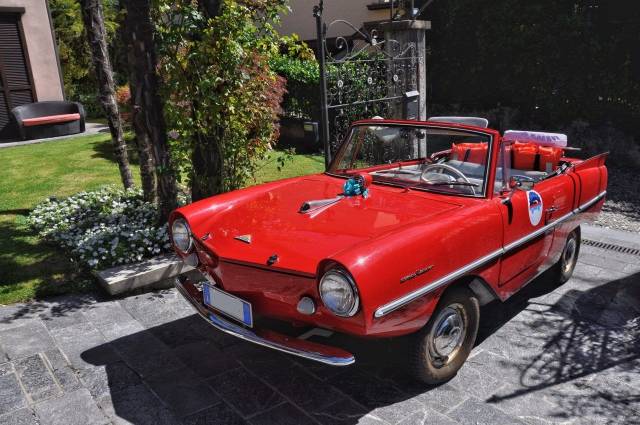Amphicar 770 classic cars for sale
The Amphicar 770 occupies a unique place in automotive history as the only mass-produced amphibious passenger car, able to drive both on land and navigate in water. Developed in Germany and powered by a Triumph engine, the 770 is a rare blend of engineering innovation and quirky design. Its characteristics and technical solutions make it instantly recognisable among enthusiasts.
Suchergebnisse
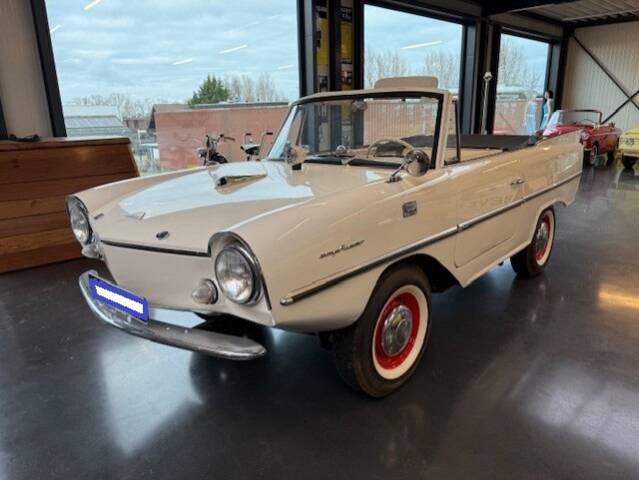
1967 | Amphicar 770
AMPHICAR 770
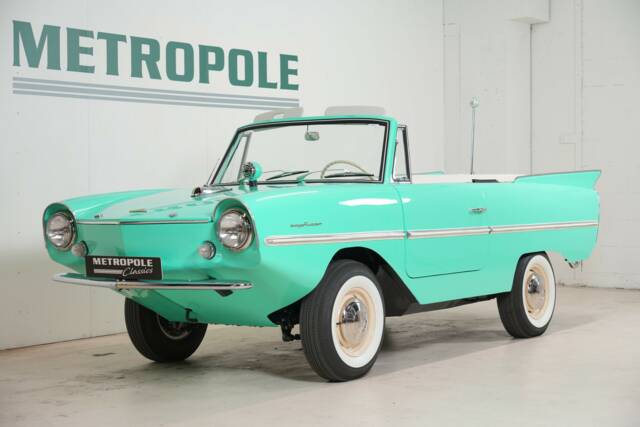
1964 | Amphicar 770
Amphicar 770 M1065
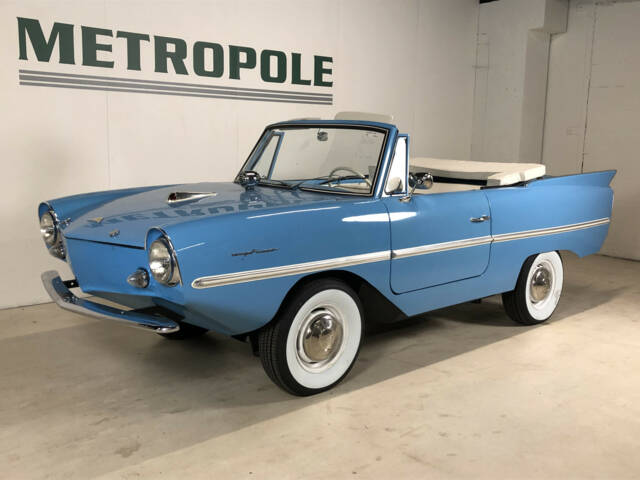
1962 | Amphicar 770
Amphicar 770 M0825
Amphicar 770 listing references from Classic Trader
Below you will find listings related to your search that are no longer available on Classic Trader. Use this information to gain insight into availability, value trends, and current pricing for a "Amphicar 770" to make a more informed purchasing decision.
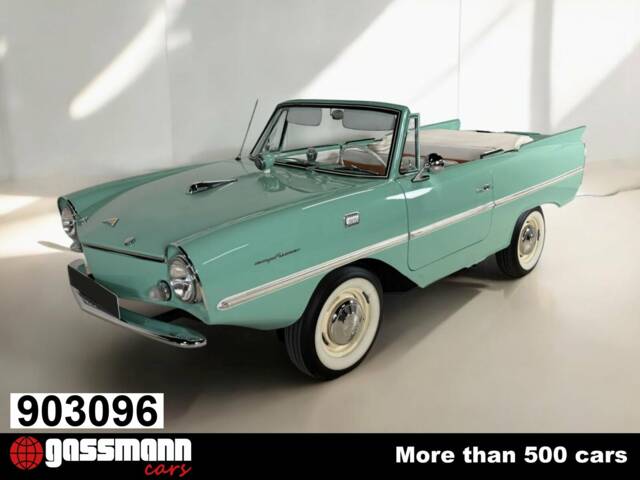
1964 | Amphicar 770
Amphicar 770
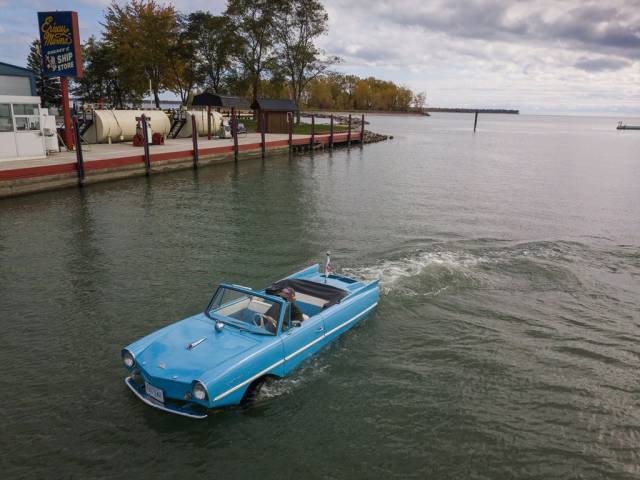
1962 | Amphicar 770
1962 Amphicar 770

1965 | Amphicar 770
Amphicar 770
1962 | Amphicar 770
Original amphibious car
History of the Amphicar 770
The Amphicar 770 made its public debut at the 1961 New York Auto Show, setting itself apart as the first amphibious car produced for civilian use in significant numbers. Conceptualised by German engineer Hans Trippel and manufactured mainly by Deutsche Waggon- und Maschinenfabrik (DWM) in Berlin, the Amphicar was aimed primarily at the US market, where 3,046 of the total 3,878 units built eventually arrived. The high price tag, roughly equivalent to two Volkswagen Beetles, limited its popularity, and unsold stock was rebranded with later model years and sold at a reduced price. Despite these commercial challenges, the Amphicar 770 is still remembered today for its innovative dual-mode capability, as well as for its presence in pop culture and ownership by President Lyndon B. Johnson.
Model History of the Amphicar 770
Production of the Amphicar 770 ran between 1961 and 1965, with the model being sold up to 1968 due to high initial output and sluggish sales. There was no direct predecessor or successor; it remains the only mass-produced amphibious passenger car targeting regular drivers, rather than military or commercial users. Although initially manufactured in Germany, the model’s main market was the United States, and after stringent new US regulations in 1968, imports ceased entirely. No significant updates or derivatives exist, and later model years often reflect sales dates rather than actual manufacture.
Highlights and Uniqueness of the Amphicar 770
The Amphicar 770 stands out as a true engineering outlier—a car and boat in one, equipped with a Triumph Herald engine and twin rear propellers for aquatic travel. Steering is always via the front wheels, both on land and water, providing an unusual driving experience that enthusiasts either love or debate. Its thick steel monocoque body ensures buoyancy and durability, while details like the additional door locking system for water use, bilge pump, and distinctive position lights are specific to its dual-role nature. Each Amphicar 770 is a convertible and originally came in just four colours: Beach White, Regatta Red, Lagoon Blue, and Fjord Green.
Technical Data of the Amphicar 770
Special Editions and Collectible Models
No known factory special editions of the Amphicar 770 exist. All cars produced were convertibles and offered in the same primary colour palette, differing mainly by production year and market.
Weak Spots and Common Issues
Maintaining the Amphicar 770 requires attention to unique amphibious components. After water use, owners must service 13 individual grease points, necessitating the removal of the rear seat and jacking up the vehicle. Parts sourcing can be a challenge, though US stockpiles helped enthusiasts, particularly through Hugh Gordon’s acquisition of spare inventory and tooling. Door and body seals, the bilge pump, and propeller transmission units require regular inspection and maintenance due to their exposure to water and potential corrosion risks.
Engine, Transmission, and Handling of the Amphicar 770
Powered by a British Triumph Herald engine, the 770 produces between 38 and 43 PS, suitable for city and light touring speeds on land, with an official top speed of up to 120 km/h. On water, twin nylon propellers deliver up to 12 km/h, with steering via front wheels in both environments—a compromise for amphibious versatility but one that makes water manoeuvrability less direct than with a conventional boat. The transmission features a unique two-stage design: four speeds for land and a special two-speed system for water (forward and reverse only). On both surfaces, the driving sensation is distinctive—interesting and engaging for those aware of the car’s dual-use limits. Every Amphicar 770 is technically similar, though early models (1961–1963) may show subtle detailing or usage variations due to production changes and parts supply.
Design, Interior and Accessories
Designer Hans Trippel gave the Amphicar 770 its characteristic form: compact convertible, streamlined for water use, with emphasis on sealing and functionality. Doors feature additional waterproofing latches. The steel body is designed as a tub, maximising buoyancy and interior space. Luggage solutions were also unique: the spare wheel resides under the front bonnet, and the fuel tank is sited above the front axle. Standard equipment included a horn atop the bonnet, colour-coded navigation lights, and a practical bilge pump. All Amphicars left the factory as convertibles, with club enthusiasts sometimes adding period-correct accessories or distinctive nautical-themed touches.
Other Noteworthy Features
The Amphicar 770 has entered popular culture through film and TV appearances, while owners today still participate in 'swim-ins'—rallies devoted to amphibious crossings. Its reputation for channel crossings and Alaskan river runs add to its mystique. Although its original market was primarily the USA, a number of cars were also delivered to the UK and continental Europe.
Summary of the Amphicar 770
The Amphicar 770 remains the sole classic in its segment, blending functional engineering with period charm. Its amphibious capability, Triumph powertrain, and iconic two-mode drive deliver a unique classic experience. Demand is focused entirely on this series among Amphicar listings, underlying its exclusive place in both car and classic car enthusiast culture.



